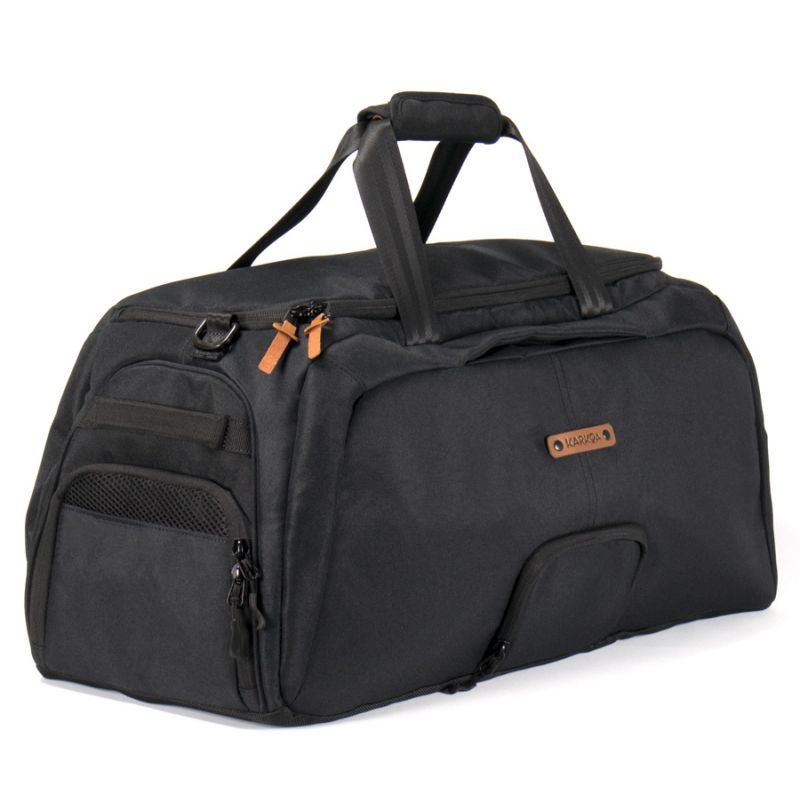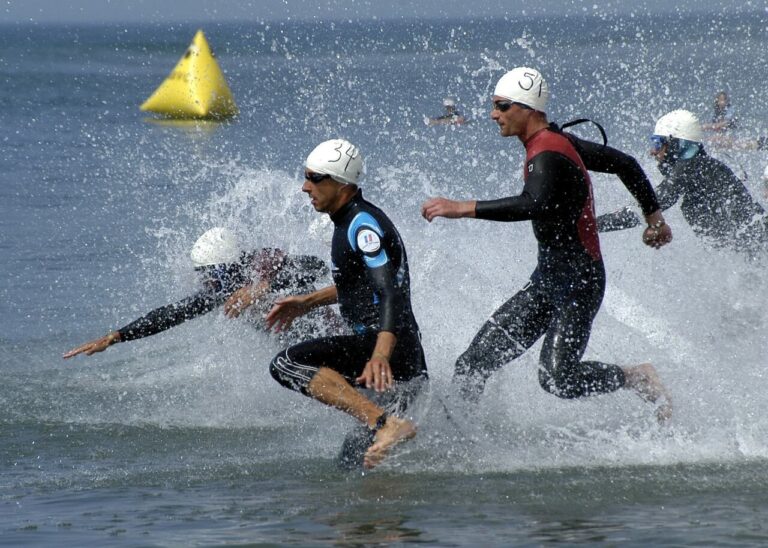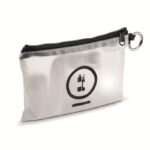Many swimmers have an approximate technique and exhaust themselves by expending a lot of energy. It is therefore important to learn the crawl in order to swim correctly.
Swimming the crawl: Stomach movements
To swim the front crawl, you need to be able to move on your stomach. It may sound simple, but many swimmers have a bad position, which reduces their performance.
Before learning the other crawl techniques, it’s imperative to work well on your buoyancy and lying position. The body must be straight, stretched out as far as possible and rigid. This requires good sheathing, which is acquired with training. With a good position in the water, you reduce resistance and then increase the efficiency of your movements.
To improve your position, take a board, hold it out in front of you with your arms outstretched and move forward using your legs to make small strokes. When you’re also working on your breathing, you can move your head underwater and breathe on your side.
Swimming the crawl: Arm movement
Once you’ve found a good position in the water, it’s time to learn how to move your arms. The arms are very important in front crawl because they propel the swimmer, unlike breaststroke where it’s the legs.
To learn the arm movement properly, you need to break it down. This makes it easier to visualise all the steps and concentrate on applying them effectively. Start with a front glide, arms stretched out in front. Looking down, perform the crawl movement with one arm, taking it out of the water and bringing it forward. Pause for a few seconds and note how you move forward. Then repeat the same movement with the other arm. Go slowly, the aim being to get a good feel for the movement so you can memorise it.
At this stage, don’t kick your legs. This allows you to concentrate solely on your arms. On the other hand, the leg muscles are large and therefore require a lot of energy. Save yourself for the rest. The use of a pull-buoy helps to immobilise the legs and maintain buoyancy.
Make sure your movements are as wide as possible to get the water as far forward as possible so that you have more effective support, and relax your muscles during the return phase. Also pay attention to the placement of your hand as it enters the water at the end of the return stroke.
Swimming the crawl: Breathing
While movement is important in the technique of swimming the crawl, breathing is just as important. If you can’t manage to breathe in the front crawl, you’ll quickly burn out, no matter how efficient your movements are.
You need to repeat the previous exercises and learn to place your breathing. This is done every two, three, four or five movements. Choose the rhythm with which you are most comfortable. The ideal is still to choose an odd number so that you breathe alternately on both sides. That way, your position in the water is less disrupted.
As you move your arms, keep your head underwater, looking at the bottom, and blow gradually and continuously. Your lungs must be empty when you take your breath by turning your head to the side. If you don’t empty your lungs completely before taking a breath, it will be less effective. You’ll inhale less air and quickly run out of breath.
Swimming the crawl: Leg movement
In the front crawl, propulsion comes solely from the arms. When you feel comfortable enough, start kicking your legs from your thighs. These kicks do little to propel you forward, but rather to ensure your balance on the surface of the water.
Video summary
Crawl technique: Mistakes to avoid
When you’re learning to swim the crawl, it’s common to make certain mistakes. The sooner you correct them, the more efficient your stroke will be.
Head position
The position of your gaze is important. You absolutely must look down to keep your spine aligned. If you look ahead to find your bearings, you naturally increase resistance and waste precious energy. In the pool, you can find your bearings by looking at the drawings and lines at the bottom. Otherwise, take a breath to have a quick look and estimate your position.
Hand and arm support
Beginners often want to make quick movements with their arms. But this is counter-productive. Movements that are too fast prevent the swimmer from having good hand and arm support in the water.
Breathing in the crawl
It is also common to see swimmers holding their breath during strokes and only blowing when they breathe. At best, this will reduce the efficiency of the stroke. With your head to one side, you’ll have to blow the air out of your lungs before you can fill them again. Resistance in the water will be increased, and breathing will last longer and be less efficient. The muscles will not be oxygenated properly and the swimmer will quickly become exhausted.
Leg movements
Finally, the last classic mistake comes from the way the legs beat. Stronger beats will not be very effective compared to the action of the arms. On the other hand, because the leg muscles are so large, the heart rate will increase and so will the energy expended. Once again, the swimmer will quickly become exhausted.
Learn-to-swim crawl lessons
The educational are exercises to help you understand how to swim the crawl.
- Swimming the crawl with your fists closed helps to improve your support and propulsion. A closed fist reduces the support surface compared with an open hand. This exercise makes you aware of the importance of the forearm in the stroke.
- The shoulder/armpit touch helps you work on the return of the arm. With each movement of the arm, the hand touches the shoulder and then the armpit. This makes it easier to relax on the return stroke, resting the muscles and protecting the shoulder.
- To work on kicking, swim with your head out of the water, looking forward. You should also breathe forwards. This may not be the right position, but it will help you to work on the positioning and efficiency of the kicking action, which in turn will improve your position and propulsion.
- To improve breathing and endurance, swim the crawl normally, but breathing every three, then five, then seven arm movements.
The ideal bag for your swimming training sessions
To carry all your pool equipment and spares, take advantage of the multiple compartments and waterproof pockets of the Karkoa pool bags. Organise your stuff in separate pockets for greater efficiency.
















